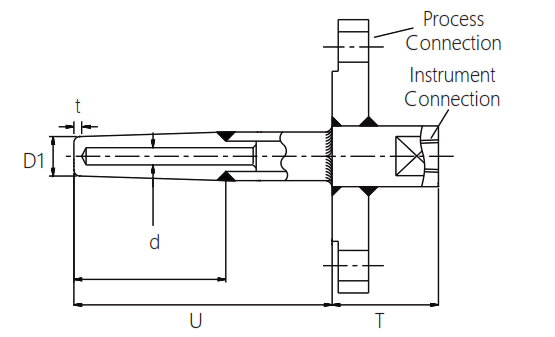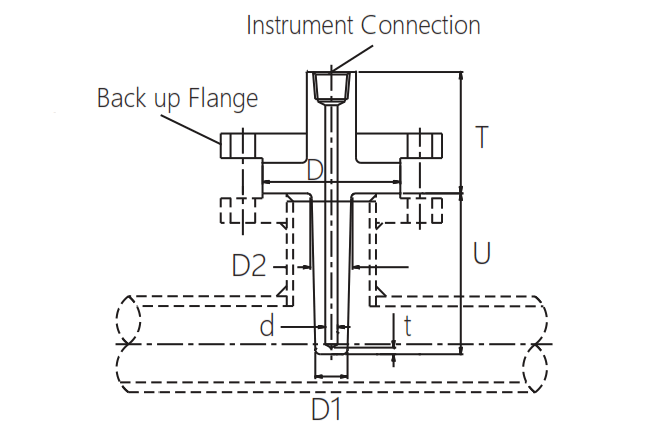Thermowell is provided to protect the temperature sensor against mechanical damage and corrosion. A very sturdy design may extend the life of the sensor but may lead to a poor response. Similarly, a delicate design will have a short life but will increase response time. Therefore, the right balance must be compromised. For the given process parameters, we can achieve an optimal thermowell design by considering aspects such as temperature, pressure, fluid velocity and corrosion. Such designs will be in accordance with ASTM PTC 19.3. Thermowell materials can be SS304, SS316, SS316L, SS310, Inconel® 600, Incoloy® 800, Monel®, Hastelloy® brass depending on the process parameters and fluid type.
Types of thermowells
- (Bar Stock Threaded (BT) (Process threads NPT, BSP or Metric
- (Bar Stock Flanged (BF) (Flanges as per ANSI, BS or DIN
- (Bar Stock Weld In (BW
- (Fabricated Threaded (FT
- (Fabricated Flanged (FF
- (Fabricated Weld In (FW
Barstock thermowells are usually offered up to 600 mm in length. Thermowells made above 600 mm are not recommended. If necessary, the insertion length can be determined by performing awakening frequency calculations in accordance with PTC 19.3. Welding (blade welding process) Thermowell is performed by professional and certified welders, which is specified in the ASME code after the operation, and welding joints can be tested up to 600 kg / cm. The concentration of drills in 10% of the wall thickness can be determined using radiography or ultrasonic method. Material tests such as ultrasonic testing are also available to detect defects.
Bar Stock Threaded Thermowell

- (Bore in mm (d
- (Cold End Diameter in mm (D2
- (Hot End Diameter in mm (D1
- (Insertion Length in mm (U
- (Tip Thickness in mm (t
- (Extension Length in mm (T
- (Dia of Barstock in mm (D
Bar Stock Weld-In Thermowell

Bar Stock Flanged Thermowell

Fabricated Weld-In Thermowell

Fabricated Threaded Thermowell

Fabricated Flanged Thermowell

Special Thermowells
Van Stone Type Thermowell

welding operation
Thermowells are often welded by design. Welding is the most important operation because incorrect welding can cause the welding to fail in the process in the form of corrosion and cracking. This is especially true when the Thermowell is used for important applications such as hydrogen, H2S or explosives.
Nozzle suitable for thermowell collar design
Engineers often face many problems in installing collar design on site for the following reasons:
- A) The nozzle ID is inconsistent.
- B) Some welding materials inside the nozzle prevent the collar from entering.

To solve these problems, we provide collar design thermowells with an adapter nozzle. The engineer only needs to weld the spot in place.
Guide for choosing thermowell materials


